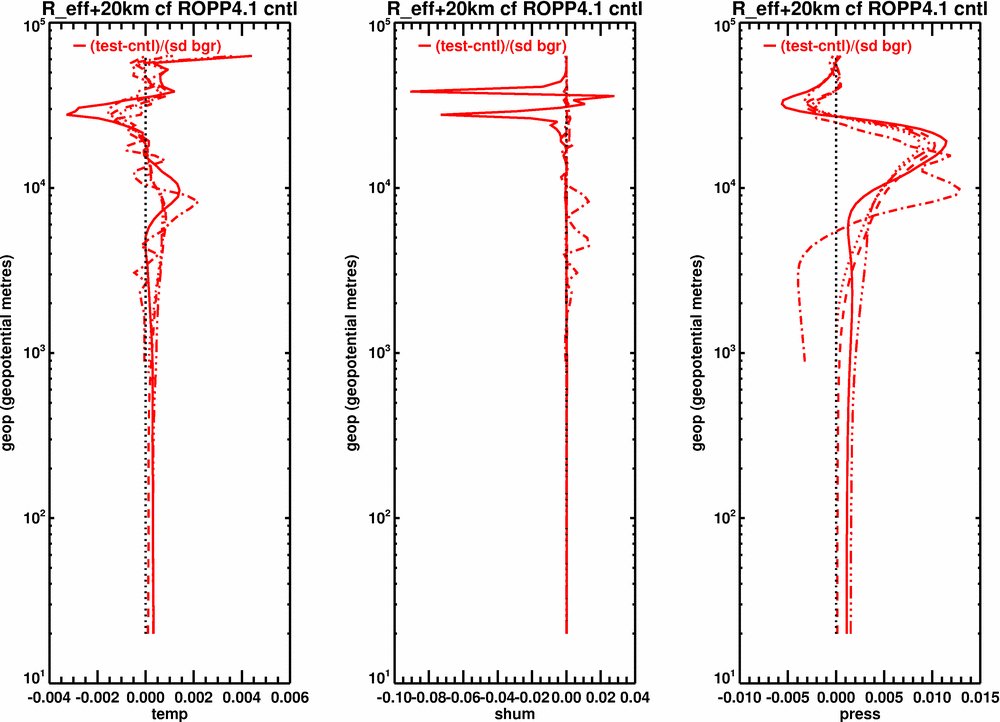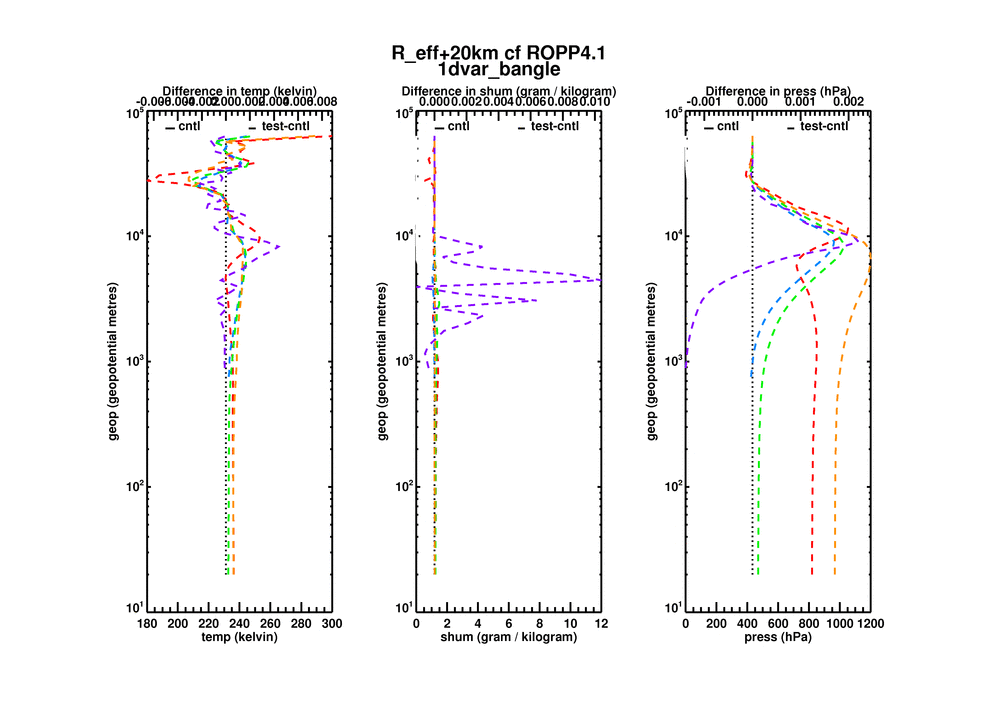Opened 17 years ago
Closed 14 years ago
#159 closed enhancement (fixed)
Geodesy routine correctness
| Reported by: | Huw Lewis | Owned by: | Ian Culverwell |
|---|---|---|---|
| Priority: | normal | Milestone: | 6.0 |
| Component: | ropp_utils | Version: | 3.0 |
| Keywords: | geodesy | Cc: | Ian Culverwell |
Description
From ROPP-2 beta test report (section 3 "Correctness"):
The reviewer has identified several instances in the geodesy subpackage where improvements could be possible: • Geometric vs geopotential transformations: Several details were found not to be of sufficient accuracy. The expressions used conform to estimations that are standard in meteorological contexts. However, they are less accurate than the GPSRO technology is, and thus will be-come the limiting factor for the data. The reviewer considers this as “correct” in the sense that conforms to standard practice. However this should be addressed in future ROPP versions. •Earth radius: The quantity estimated (Somigliana) is not the radius of curvature. It is not an accurate estimation of the radius of curvature (which depends not only on latitude, but also on the azimuth). It is not more accurate for the estimation of the geopotential than a fixed average radius. Instead, it is much more computationally expensive. The error is compara-tively small in the way and context that this quantity is used in this release. However, it could lead to very substantial errors if this quantity was used in other contexts within GPSRO applications where the Earth radius is also needed. This should be addressed as fu-ture releases of ROPP may very likely require this quantity for other purposes.
Attachments (3)
Change history (13)
comment:1 by , 17 years ago
comment:2 by , 17 years ago
| Milestone: | 3.0 → 4.0 |
|---|---|
| Version: | 2.0beta → 3.0 |
Additional ropp_utils routines have been implemented for ROPP-3 in the context of supporting new ropp_pp functionality. This includes ropp_utils/coordinates/curvature.f90, which computes curvature as a function of latitude, longitude and azimuth. See [2104].
Note, the sensitivity of FM/1dVar results to the use of 'curvature' and 'R_eff' output has yet to be established. For ROPP-3, FM and 1dVar routines continue to use R_eff.
Ticket moved to ROPP-4 milestone, in order to assess use of curvature calculations in FM and 1DVAR applications.
comment:5 by , 16 years ago
| Milestone: | 4.1 → 5.0 |
|---|
comment:6 by , 15 years ago
| Cc: | added |
|---|---|
| Milestone: | 5.0 → 6.0 |
I've taken a first look at this, and the key point is the existence of two distinct earth radii: the "effective radius", which is used to calculate the gravitational field and geopotential height; and the "radius of curvature", which is used to define the co-ordinate system in which ray paths are calculated. They are very different physically and numerically, the former being typically 20km less than the latter. But a quick sensitivity test suggests even a 20km difference in effective radius has little effect on ropp_1dvar retrievals, as shown here.
This is the normalised difference in T, q and p retrievals from the 5 profiles in the standard IT-1DVAR-04 test (UKMO background; COSMIC obs), resulting from increasing the effective radius at all latitudes by 20km. (Working on bending angle.)
Clearly the differences are small: <1/2% in T, <1% in p, <2% for q except where it's very small anyway.
I will investigate further, and summarise results in a GRAS SAF Report, but it appears from this to be of secondary importance practically, so I suggest changing milestone to ROPP6.0.
comment:7 by , 15 years ago
| Owner: | set to |
|---|---|
| Status: | assigned → accepted |
comment:8 by , 14 years ago
Axel von Engeln (EUM) pointed out at the ROPP6.0 DRI that the percentages quoted above are misleading. The quantities plotted are normalised wrt SDs of T, q, and p.
sigma(T)~2K, so the actual temp difference is < 0.003*2 = 0.006K.
sigma(q)~0.5g/kg (except where it's very small), so that actual shum difference is < 0.02*0.5 = 0.01 g/kg.
sigma(p)~0.5hPa, so the fractional pres difference is < 0.005*0.5 = 0.0025hPa.
All these, except shum, are pretty small. Only one of the profiles has a dq/sigma_q of 0.02; the rest have dq/sigma_q < 0.001, which equates to 0.0005 g/kg.
This becomes cleares when we just plot the actual differences:
comment:9 by , 14 years ago
The attached report contains a general review of the geodesy calculations in ROPP. Its conclusions are:
- The many available expressions for surface gravity differ by no more than 30 parts per million, and often much less;
- Values of the (fictitious) effective radius differ by less than 80 parts per million;
- The resulting differences in geopotential heights, or geometric heights, are almost entirely unaffected by differences in the effective radius, and therefore differ by no more than 30 ppm;
- The physical difference between the effective radius and the radius of curvature has been discussed, and the almost constant offset between them of 21km has been explained;
- The undulation between the geoid and the ellipsoid, and its spatial variation have been examined;
- The reviewer’s comments have been addressed.
The overall conclusion is that the geodesy calculations currently available in ROPP (release 6.0) are probably good enough.
comment:10 by , 14 years ago
| Resolution: | → fixed |
|---|---|
| Status: | accepted → closed |
It was required to produce this review and close the ticket before the ROPP6.0 DRI close out. So closing the ticket.



Further clarification from Josep: